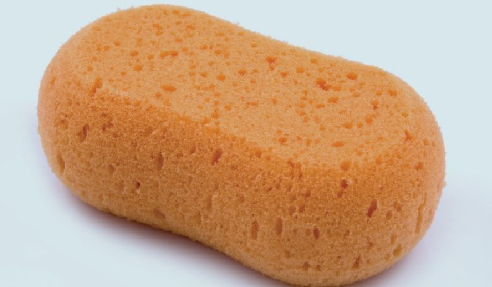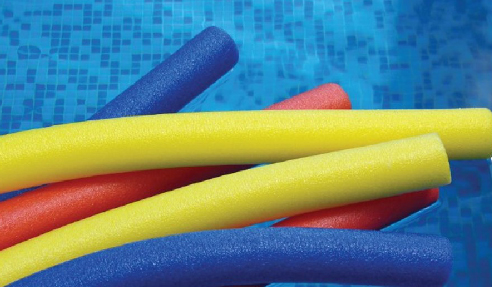Open Versus Closed Cell Phenolic Foam with Kingspan With numerous phenolic insulation boards entering the market all over the world, knowing about their differences has become vital. Because what might look the same on the outside may not always be the same on the inside. When comparing different phenolic solid foam insulation panels, it is important to distinguish between 'open cell' and 'closed cell' designs, as their respective performance characteristics vary widely. Open cell foamIn an open cell foam, the blowing agent forms irregular pockets that are linked together into a continuous interconnected capillary network. Because the pockets, or cells, are open, the blowing agent will quickly disperse into the atmosphere and the cells will refill with the surrounding air. Immediate transfer of air or water vapour is enabled through the 'open' or 'porous' interconnected material structure, just like a sponge. The effect of replacing the very low conduction gas with air is to diminish the thermal resistance of the material significantly. 
An example of an open cell foam is the bath sponge where water can easily flow through the entire structure, displacing the air. Closed-cell foamBy contrast, closed cell materials feature millions of unconnected microscopic intact bubbles which effectively contain the blowing agent long term. Closed cell structure foams also have higher dimensional stability and low moisture absorption coefficients compared to open cell foams. 
Pool noodles are an example of a closed cell foam, the gas pockets are sealed from each other so the noodles do not allow moisture ingress. Measuring closed cell / open cell contentThe qualitative differences between closed and open cell systems can be measured accurately using a pycnometer, which measures the impenetrable volume of the sample by gas. Test methods should conform to EN ISO 4590 standards (or equivalent), and the product tested should be easily identified on the test report by its product name, description and any other definitive characteristics reported, such as the foam density. What does this mean for phenolic foam and its impact on thermal performance?In closed-cell phenolic foams, the conductivity value, also known as the lambda value, of the final foam is directly related to the lambda value of the blowing agent that is present in the final product as the cell gas. The retention of this blowing agent in the closed cell structure is what delivers its high thermal performance. High quality closed cell phenolic foam has at least 90% closed cell content which can produce approximately double the R-value of open cell foams. Poorer quality foam insulation may have a high percentage of closed cells but the cell walls may be of inferior quality and have 'windows', or holes, that allow the gas to escape over time. In open-cell phenolic foams, blowing agents leak out of the porous material, being replaced by air. The degree of movement through the body of the material is dependent on a range of factors, including the size and density of the cells, moisture ingress, as well as the chemical composition of the material itself. This can have the effect of reducing the thermal performance of the product by around 50%. The salient point is that porous, sponge-like characteristics are not ideal features of insulation. Quite simply, any flow through an insulating material is defeating its purpose as it facilitates unwanted energy transference. This is why only an aged R-value is a true representation of the performance of a foam and should be used for declaration and not the R-value achieved immediately after manufacture. Ageing standards recognise the effect of leakage and stipulate that declared R-values should take this into account to gain a more accurate measure of long-term performance of the insulation. Kooltherm - A closed cell phenolic foamKingspan's Kooltherm insulation board is a high-quality closed cell phenolic foam with a negligible open cell content (2%), which provides an ultra-low thermal conductivity (lambda value λ) and therefore a very high R-value. Its sound cell structure, tiny cell diameter and premium CFC/HCFC-free blowing agent clearly distinguish it from its competitors. Importantly, the superior closed cell technology of Kingspan Kooltherm will provide reliable long-term thermal performance. The table clearly shows that to get the thinnest possible profile, closed cell phenolic foam insulation is the optimal solution as only half the thickness of open cell material is needed to get the same thermal performance. Frequently asked questionsThese are the important questions you should ask before accepting an imitation phenolic insulation product: What is the open cell content of the product? Have ageing standards been applied to the R-value declarations? Visit www.kingspan.com for more details.
|
1300 247 235 Malaga, WA, 6090
|


 Underfloor Insulation for Suspended
Underfloor Insulation for Suspended Standing Seam System for 3D Geometric
Standing Seam System for 3D Geometric Australian Steel Water Tank by Kingspan
Australian Steel Water Tank by Kingspan Versatile Roofing for Bold Designs by
Versatile Roofing for Bold Designs by Multi-Groove Panels for the Building
Multi-Groove Panels for the Building Dri-Design Flat Rainscreen Facade
Dri-Design Flat Rainscreen Facade Ocean Debris and Waterway Filtration
Ocean Debris and Waterway Filtration Residential Rainwater Harvesting Tanks
Residential Rainwater Harvesting Tanks Zero Carbon Buildings CPD Webinar by
Zero Carbon Buildings CPD Webinar by R-Value Declaration for Insulation
R-Value Declaration for Insulation Flexible Thermo-cellular Reflective
Flexible Thermo-cellular Reflective Updated AS/NZS Standard for R-values
Updated AS/NZS Standard for R-values 6 Star Green Star Rating for
6 Star Green Star Rating for Thermal Bridging & Total R-Values from
Thermal Bridging & Total R-Values from Underfloor Rigid Board Insulation for
Underfloor Rigid Board Insulation for Compliance Deadline for Soffit
Compliance Deadline for Soffit Specify Compliant Building Products with
Specify Compliant Building Products with New Commercial Insulating Soffit Board
New Commercial Insulating Soffit Board Energy Efficient Homes with Insulation
Energy Efficient Homes with Insulation Flexible Insulation for Double Brick
Flexible Insulation for Double Brick
